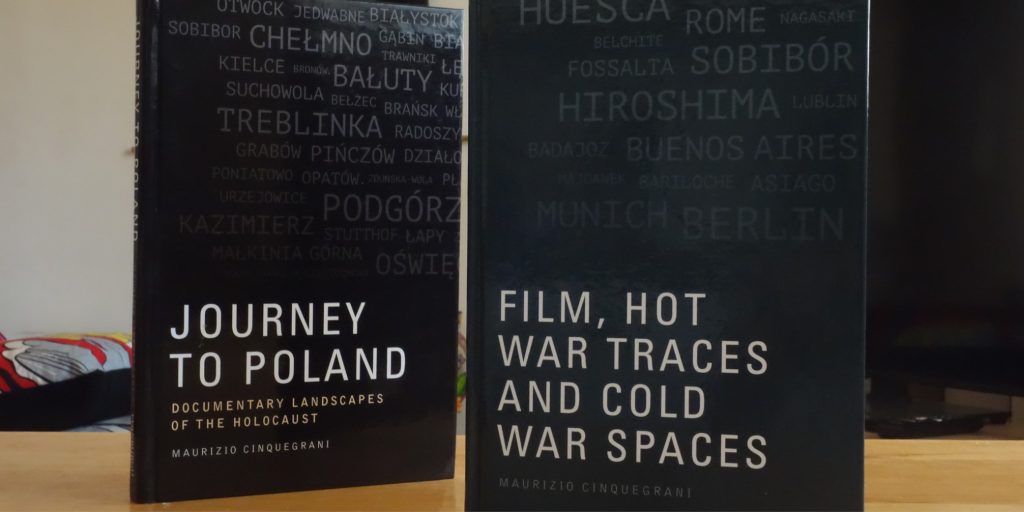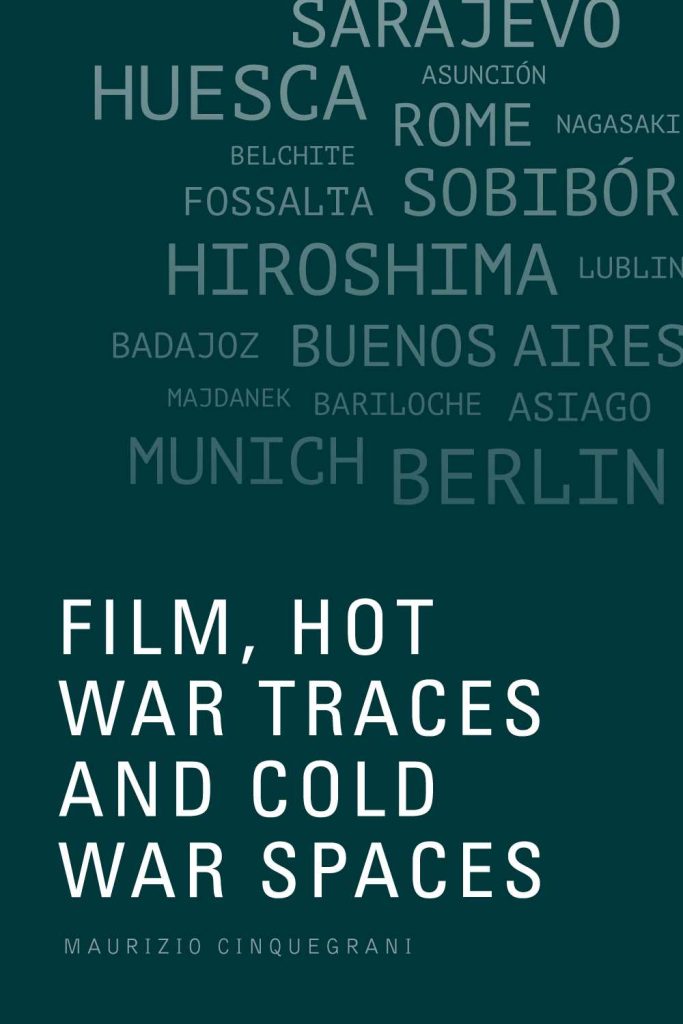
by Maurizio Cinquegrani

Film, Hot War Traces and Cold War Spaces was released in August by Edinburgh University Press; it’s my second book with the publisher. In the previous volume, Journey to Poland: Documentary Landscapes of the Holocaust, I have mapped the unfolding of the Holocaust in Poland through a wide range of documentaries and with a focus on the places which were destroyed in the process of the genocide and the sites which were built or repurposed by the Nazis for the annihilation of the Jews. Journey to Poland was published in 2018 and soon after that I began working on a new book and started a journey which has taken me to trenches, ruins of villages and civic buildings, abandoned death and concentration camps, city streets, forests and sports venues, to the places which I have investigated across the eight chapters of my book. I’m fascinated by the impact of film on the creation of a shared memory by imagination of historical events which we have not witnessed first-hand. Similarly, I have an enduring interest in the ways in which events unfolding across the world and over a long period of time can be linked by means of film.
The focus of my book is on the aftermath of traumatic events and on the ways in which film can capture the locations of historical incidents at the time of their happening or moments, days, weeks, months, and years afterwards. The passing of time and cultural and political flows have shaped my reading of filmic spaces through a process consisting of digging through layers of history and depictions of place. Ultimately, the immaterial archaeologies of Film, Hot War Traces and Cold War Spaces are about war in its most inflamed, bloodied, unfaltering and cruel forms. They are about a century which was shaped less by the technological advancements which brought mankind to the Moon and more by the catastrophes which unfolded on unprecedented scale across the world.
The investigation of these ideas has led me to the discovery of often-unexpected connections between people, events and places, and this has been a constant source of excitement in the process of writing the book. Accounts of Holocaust survivors living next door to Nazi escapees in Latin America, the way in which the Italian front of First World War became a template to tell stories about Italy in the second half of the twentieth century, among many others, are narratives that emerge vividly from the histories I have explored. I was also mesmerised by the archival material I have had the opportunity to access. Amateur footage of Hiroshima in the 1930s with the building which would later become the Atom Bomb Dome in its heyday, newsreels of the Italian trenches in the First World War and of the battles of the Spanish Civil War, of anti-German propaganda in Latin America and of the atrocities in Eastern Poland during the Second World War, television reports of the construction of the Berlin Wall, the Munich Massacre and the kidnapping of Aldo Moro – this material is endlessly inspiring and has led my approach to history, memory and place. I was fortunate to complete my research on primary sources just before the time when the COVID19 pandemic relegated us to our houses and to monotonous walks in our neighbourhoods. During the lockdowns I have complete the first draft of my manuscript. In the early stages of this project, I could not imagine we would all soon experience one of those historical events which can shape the world, which to some degree has now shaped us.
More disturbingly, tragedies such as those discussed in Film, Hot War Traces and Cold War Spaces are again dominating news reports at this difficult time of our human history. I have written pages and pages about the anxieties of the Cold War and the fears of incidents which had the potential to ignite a thermonuclear war. News reports and social media are today saturated with references to war, battlefields, atrocities, negotiations and even to the nuclear threat, with the names of Ukrainian cities, towns and regions, and with news of a regional hot war and arguably a new cold war. For this and other reasons, having to deal with the harrowing and violent stories emerging from the books I have written for EUP has not always been easy. I’m currently taking a break from war and I’m working on a project which focuses on documentary film and a very special place for me, the Aran island of Inis Mór. What has not changed is my enduring interest in place, memory and film.

About the Book
Film, Hot War Traces and Cold War Spaces explores the ways in which film engages with historical events and their impact on present-day landscapes, through a spatial reading of film articulated through the process of charting both creative and coherent cinematic topographies.
About the Author
Maurizio Cinquegrani is a Senior Lecturer in Film at the University of Kent and Fellow of the Royal Geographical Society. He has written widely about film, memory, history and place and his work includes the monographs Of Empire and the City: Remapping Early British Cinema (2014) and Journey to Poland: Documentary Landscapes of the Holocaust (2018).
Sign up for our mailing list!
Interested in learning more about this book and other titles from Edinburgh University Press? You can sign up for our mailing list here!
You can also read more of our film studies blogs here.





